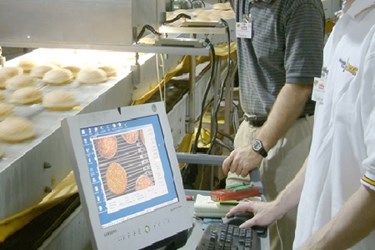How Important Is Verification In Detecting Food Contaminants?
By Melissa Lind, contributing writer

Ensuring safety of the food supply is one of the most important things food producers do. Verification processes are well defined in by FSMA in addition to HACCP requirements. However, business continuity also demands close attention to preventative measures in terms of foreign-body detection.
Developing a process to verify the absence of foreign material is essential. Food manufacturers and processors cannot afford to rely on human-only interventions and must employ some type of automated technology for detecting foreign objects. One of the standards for detection of foreign body presence is metal detection.
Protect Your Brand: Ensuring Food Safety With Quality Management Systems
In order to use a metal-detection system efficiently, as well as comply with provisions demanded by FSMA’s Preventative Control rule, processors and manufacturers must test for metal detection failures. This process, verification, is exactly what it sounds like — a double-check to confirm that the equipment is functioning as expected. In most cases, this requires spot-checking using a completely separate method of detection.
Verification may be considered inherent if two types of technology are in use simultaneously, but only when the inspection point is at the final stage of production. In most cases, verification will be performed on finished goods, using additional methods such as a manual run through X-Ray technology or a hand-held metal detection system.
Either case is a preventative control measure taken to ensure that no contaminated food actually enters the supply chain. If during production it is determined that contamination has occurred, the food lot in question must be quarantined until the source is identified. Then corrective action can be taken and the food lot is re-tested and verified to be contaminant free. In most cases, investigation can be limited to the last approved detection check, but only if the machinery had been functioning appropriately according to standards with appropriate documentation.
Related: Baked Goods Manufacturer Uses X-Ray Inspection To Comply With National Standards
For example, if industry standards and operating procedures require that machinery is checked every four hours, investigation can begin at the last four-hour checkpoint provided that the system has been maintained and was in good functioning order. These requirements would include:
- The system was previously validated as required according to technical specifications
- The system manufacturer should have been involved in initial validation standards and methods, either through technical assistance or training and information services
- They system has been appropriately calibrated to technology specifications. In most cases, calibration should take place upon installation and reconfirmed on an annual basis or more frequently
- The system has been routinely maintained as appropriate and subject to cleaning and inspection at established intervals
- Documentation exists for all relevant activities. If document is lacking, there is no proof that the system is truly in good working order
If the system has previously met all of the requirements of “good working order,” corrective action can be taken to identify issue(s) and restore the equipment to optimal performance. In many cases, the affected product can be run through the same system with additional verification to ensure that all contaminants have been eliminated.
The FDA and other agency requirements are not the only reason that industry focus has shifted from reaction to prevention. Certainly, avoiding costly recalls and regulatory action is a consideration, but public trust may be more important in maintaining consumer confidence and customer loyalty which will ensure that revenue is maintained.
